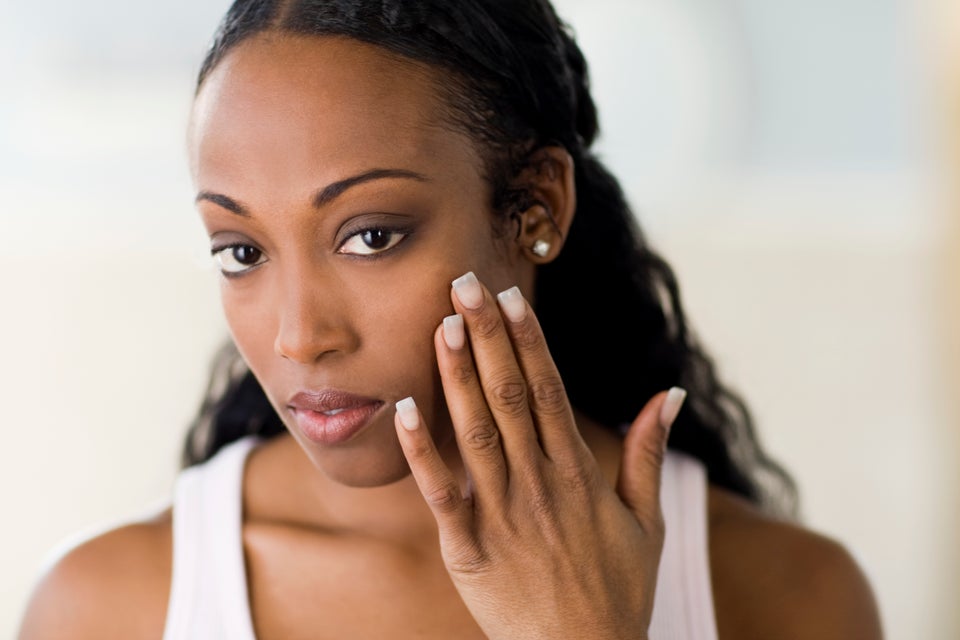How To Know If You Have Dry Or Oily Skin

If y'all're a beauty junkie, chances are you've gotten sucked into trying some trendy new peel care product, only to be disappointed that it couldn't evangelize. Accept you ever thought about the fact that your dull, lackluster skin could be the result of using the wrong products for your skin type?
Aye, apparently, there's a method to the madness when it comes to formulating the correct cosmetic equation and chemic mixture for certain skin types. By at present you lot're probably wondering, well, how can I know what beauty regimen to follow if I don't know my pare blazon? Luckily, you have us to break down the common skin types and the like shooting fish in a barrel way to examination what blazon yous have.
Typically, the iii skin types are dry, oily and combination. Dry pare and oily pare are pretty self-explanatory, and combination pare is obviously a little chip of both. According to Dr. Tess Mauricio, dermatologist and CEO of M. Beauty Dispensary, you lot tin employ the three-step blotting test below to make up one's mind your skin blazon.
1. Launder your face with a gentle cleanser and h2o. Use your easily to clean your face and avoid scrubbing too difficult.
2. Dry your face with a towel and leave your pare alone for ane hour without applying any products or touching it.
iii. Afterwards one hour, if your face feels tight, you have dry skin. After blotting your skin with tissue paper, if in that location's oil on your T-zone (brow, nose and chin), merely not your cheeks, you have combination skin. If you practise the aforementioned tissue-paper examination on your cheeks, and there's an oily polish on your T-zone and cheeks, you have oily pare. However, if your skin looks blotchy and crimson and feels tingly, you have sensitive skin.
"African-American skin has a higher level of melanin (dark pigments), hence the dark color," explains Jenny Nguyen, founder of Y/OUR personalized skin intendance. " Melanin helps protect the skin against sun damages, which means information technology can protect itself against harm from the sun, far better than those with pale skin. Nighttime skin has a natural SPF of around fifteen, while pale skin has a natural SPF of only 3 or 4. African-Americans have a higher degree of sebaceous glands that make skin oilier."
Now that you know your pare type, you can choose the best products that will evangelize a healthier, more than radiant complexion.
Source: https://www.essence.com/beauty/how-to-test-skin-type/
Posted by: hernandezmeare1990.blogspot.com


0 Response to "How To Know If You Have Dry Or Oily Skin"
Post a Comment